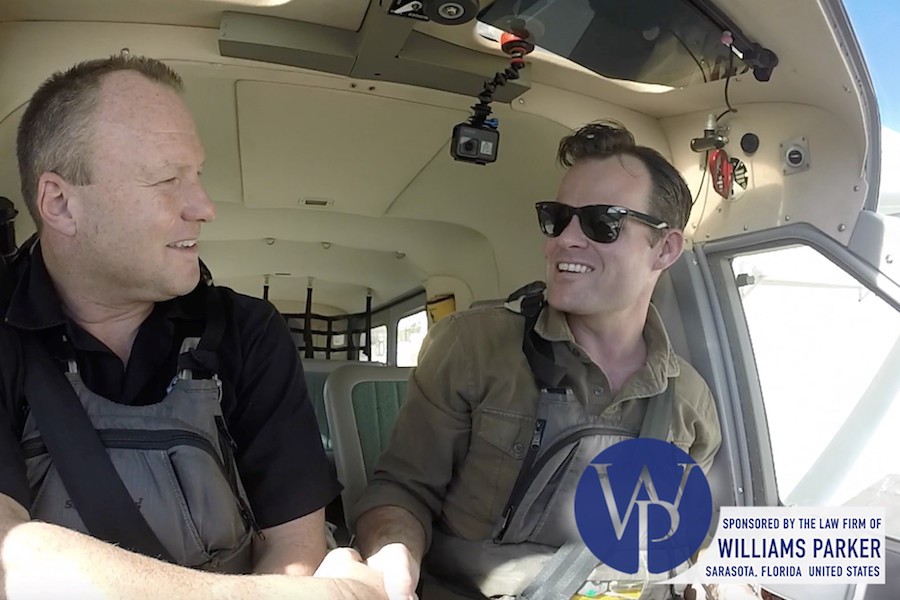From the Cockpit Part 15: de Havilland DHC-2 Beaver
Todays News
SRQ DAILY FRESHLY SQUEEZED CONTENT EVERY MORNING
THURSDAY APR 13, 2017 |
BY PHILIP LEDERER
Pictured: Dan Nichols (left) of Ryan Aviation Seaplanes and Ryan Rankin in the cockpit of the DHC-2 Beaver. Photo courtesy of Ryan Rankin.
Editor’s Note: This is part fifteen of an ongoing series documenting the flights of active-duty US Navy Pilot Ryan Rankin on his journey to fly 52 planes in 52 weeks through the year 2017.
Coming up in the world of aviation, Rankin heard stories about The Beaver—a massive and rugged amphibious aircraft known around the world as the plane to get in and out of the harshest terrain known to man. Some pilots would have an “almost religious” reaction to the name being spoken. Others would doff their hats as it flew overhead. Rankin found one at Ryan Aviation Seaplanes in Palm Coast, FL.
Properly called the de Havilland DHC-2 Beaver, the aircraft was introduced in 1947 from a design by a bush pilot named Punch Dickins, who gathered ideas and input from the other bush pilots of the day to create the perfect plane suited to harsh terrain. With amphibious capabilities, a powerful single engine and the ability to both take off and land with minimal “runway,” the Beaver quickly became the plane to beat in the bush. De Havilland produced the Beaver through 1967, and it was a DHC-2 that supported the explorer Sir Edmund Hillary on his expedition to the South Pole.
The plane Rankin flew may not have seen the South Pole, but it’s done its fair share of globetrotting, previously serving as a crop-sprayer in Bangladesh and then a stint in Alaska and Canada before landing in Florida.
One of the first things one notices about the Beaver, is its size. Towering over the pilots on its amphibious floats (retractable wheels fit neatly inside), Rankin reckons it's the biggest single-engine plane he’s flown yet. Not the fastest or the most powerful, but certainly the largest. It’s too tall for him to fasten his cameras to the wings without a ladder, so he has to find a new spot before takeoff.
One of Rankin’s top five anticipated aircraft when planning this yearlong aviation adventure, the Beaver does not disappoint, but exceeds expectations. “It’s just a very smooth, very stable, classy airplane to fly,” he says. Whereas other aircraft can get “squirrely” and pilot-intensive, requiring constant hands-on attention, the Beaver flew almost instinctually with the pilot. “You point it in a direction, and it’s like it wants to do what you want it to do,” he says.
It’s not a flashy plane designed for zipping around or “yanking and banking,” but it’s an important plane and the best at what it does—flying into and back out of dangerous and mountainous climes. “Oftentimes it’s the only thing that can get there safely,” says Rankin, “and people absolutely depend on it to get the job done.”
For more about the flight in Rankin's own words and a video of the flight, follow the link below.
Pictured: Dan Nichols (left) of Ryan Aviation Seaplanes and Ryan Rankin in the cockpit of the DHC-2 Beaver. Photo courtesy of Ryan Rankin.
« View The Thursday Apr 13, 2017 SRQ Daily Edition
« Back To SRQ Daily Archive









